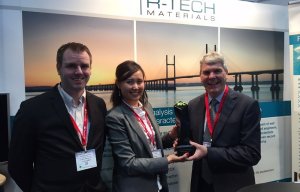
Advanced Engineering show success for R-Tech Materials
Why construction companies will find what they have been looking for at Techtextil.
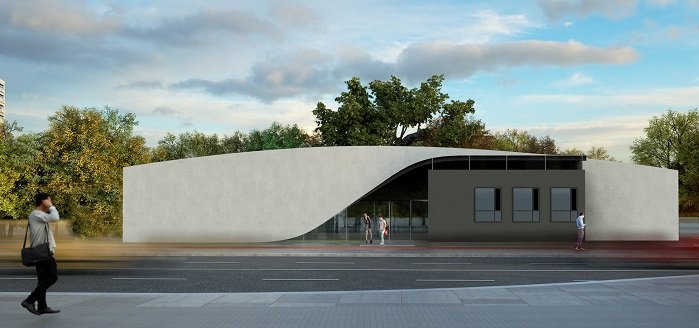
8th April 2019
Innovation in Textiles
|
Frankfurt
Sponsored Editorial
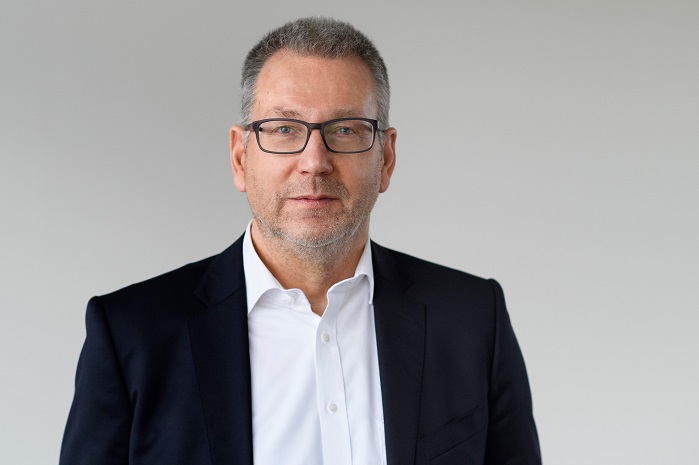
Michael Jänecke, Director, Brand Management, Technical Textiles & Textile Processing. © Messe Frankfurt Exhibition GmbH
Modern construction work is increasingly impacted by light, flexible materials, such as those produced in advance on automated textile machines: membranes, textile reinforcement, and woven materials that protect from flames, noise or dust. Techtextil, the leading international trade fair, which takes place from 14-17 May, in Frankfurt, will be providing a range of stimulating ideas for experts in the construction industry.
Technical textiles, a sector involved in intensive research and development and an area in which Germany leads the world, is increasingly targeting architects and the construction industry. Since the Federal President of Germany presented the 2016 German Future Award to three professors at the Technical University of Dresden for the invention of carbon concrete, one thing has become clear: new, fibre-based developments in the field covered by Buildtech have the potential to provide far-reaching innovations in both lightweight construction work and more traditional concrete, as well as in civil engineering projects for earthworks, water infrastructure and road building – including membrane structures. The attention is drawn to at least ten aspects, which range from materials and construction techniques, urban infill projects, heat management, actuation technology and acoustic engineering, to bionic engineering and temporary structures.
“Representing one of the twelve major areas of application for technical textiles, Buildtech is amongst the most innovative new developments. It enables us, for example, to build decorative, airy, lightweight structures. One of the reasons why the proportion of trade visitors from the building industry and architectural practices continues to grow from one show to the next,” commented Michael Jänecke, Director, Brand Management, Technical Textiles & Textile Processing.
With a comparatively low weight to surface-area ratio and high tensile strength, textiles are already challenging the traditional, tried-and-tested steel reinforcement as a building material in isolated instances: the first bridge structure, facing elements and even buildings made from this material are becoming a Mecca for planners, city architects and engineers. In Saxony, the site of the Carbon Concrete Composite-Cluster C³, which is sponsored by the German Federal Ministry of Education and Research and promotes numerous different aspects of new building methods using textiles, the preparations for two milestone projects are currently underway. These have widespread implications in both Europe and the wider world.
After a few initial trial footbridges, including for instance, those in Ronneburg and Albstadt, there is now talk of building the first road bridge over the S111 country road near Bautzen, together with the first carbon-concrete building of all time, called the CUBE, not far from Dresden’s main railway station.
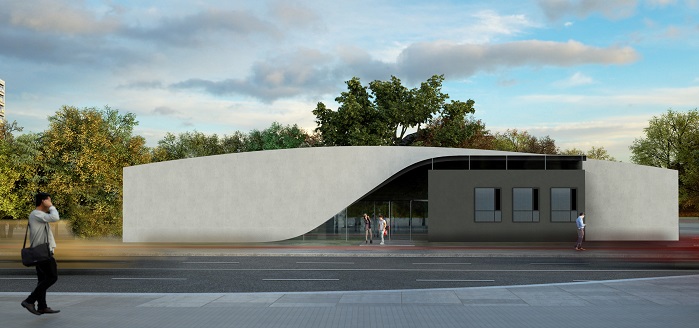
Carbon concrete – economical, sustainable, attractive. © Carbon Concrete Composite-Cluster C³
Following in the footsteps of the 246-metre-high Thyssenkrupp Test Tower in Rottweil that was given an outer skin of PTFE woven fibre glass mat, these will be further ‘beacons’ for textile-based buildings Made in Germany.
Research in textiles has recently turned its attention to the impact resistance of buildings. The aim is to make the strengthening elements in concrete structures more robust and more resistant to the consequences of any impact by means of textile reinforcement. So, how can the impact of a vehicle against a wall or the corner of a house be ‘absorbed’ by the material used, whilst, at the same time, the resultant stresses are deflected, so as to avoid sudden cracks appearing in the concrete? One answer to this is given by a project of the ITM Institute (Institute of Textile Machinery and High Performance Material Technology) in the Technical University of Dresden. The project, which is sponsored by the German Federal Ministry for Economic Affairs and Energy, will be represented at Techtextil, covering many different topics relevant to the building industry.
“Textile reinforcements made from high-performance filament yarns are precisely what is needed for this kind of multifunctional strengthening material,” said the project leaders. There now exist examples of textile reinforcement panels, which can be used preventatively to raise the level of security in constructions that are subject to impact hazards: a good example of the way in which technical textiles can be integrated into applications to meet some extremely demanding expectations.
In the case of numerous other new innovations, science again provides input – often from several disciplines at a time – for companies’ own developments. Examples of this are the Fall Bag (a protective vest with integrated airbag for falls from ladder height), which won the 2018 DEKRA Award, and the modular textile wall component system that protects against building noise and building dust, devised by the InoEmTex network for textile development in the Vogtland region of Germany.
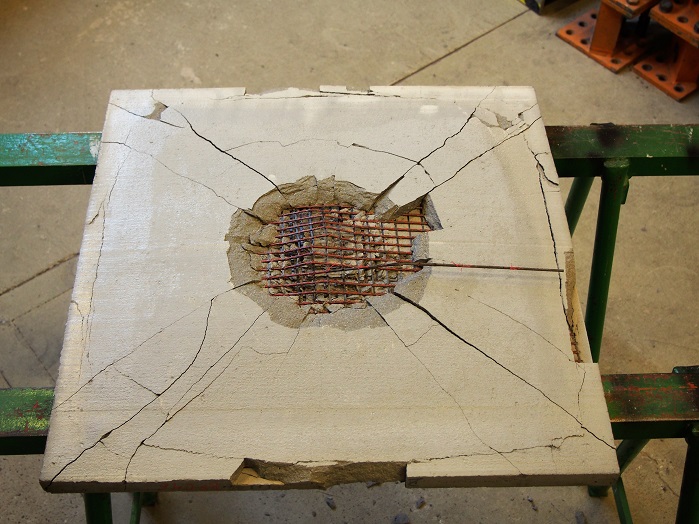
SitGrid. © Marcus Hering
And the recently available hybrid-rope detector, which has just come onto the market, for measuring the moisture content of brickwork from the joints, also belongs to this list.
A brief look at this year’s Buildtech exhibitors in Frankfurt shows that, for example, façades and external surfaces have any amount of potential for development.
So, the world’s first double-curvature concrete façade with textile reinforcement called CurveTex will be presented at the show. Its production technology has been developed by three partners from North Rhine-Westphalia: Penn Textile Solutions and pre-fabricated concrete component manufacturers, Stanecker Betonfertigteilwerk (both from Paderborn), together with the Institute for Textile Technology at the RWTH University in Aachen. The new lightweight designer surfacing material, which is just 3 cm thick and, therefore, weighs only 80 kg instead of a more usual 270 kg, increases the designer’s freedom and saves up to 80 % in the amount of concrete and cement used. The new façade has, at its core, a reinforcing textile that is capable of being ‘draped’ to the required shape, thus permitting a greater variety in the design. One demonstration exterior from Stanecker consists of 12 delicate, decorative concrete panels in textile concrete with overall dimensions of 4.83 x 2.42 x 0.03 metres.
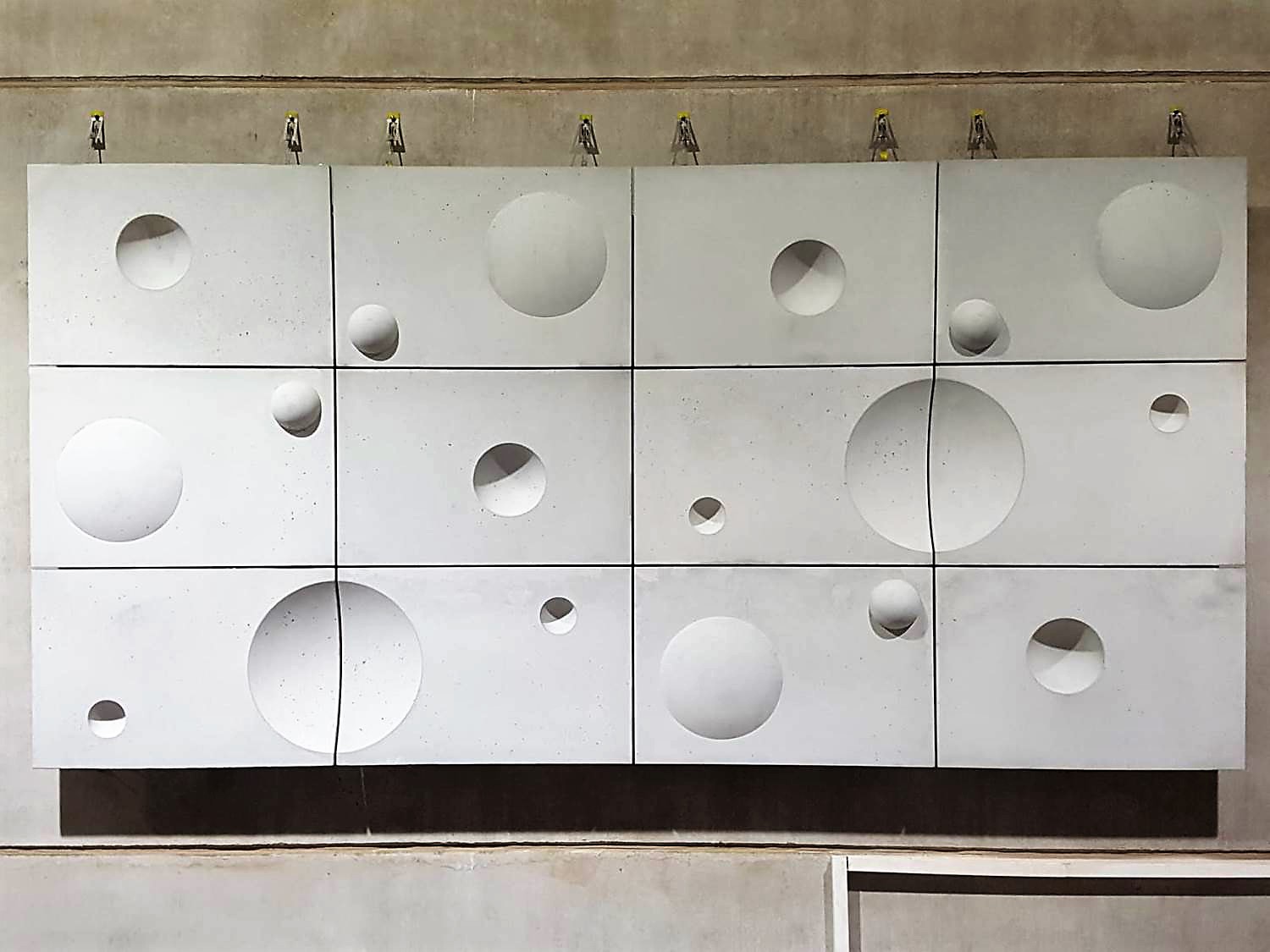
The world’s first double-curvature concrete façade with textile reinforcement called CurveTex will be presented at the show. . © Stanecker Betonfertigteilwerk GmbH
Ettlin Smart Materials from Ettlingen are introducing, in Frankfurt, an architectural woven sheet that is both lightweight and can be used, amongst other things, to create shade. Nobody has ever managed to combine its four main properties in a single material in this way before: water-resistance, permeability to air, UV-fastness and transparency. The material that will provide both shade and protection from the elements goes by the name of TransProof. It has been developed in collaboration with the Karlsruhe Institute of Technology (KIT) and recommends itself as see-through protection from both rain and sun and is equally suitable for tents and canopies. According to R&D Director Richard Müller, the specific challenge lay in devising the coating of the climate-controlling fabric, which this expert also favours for use in membrane structures.
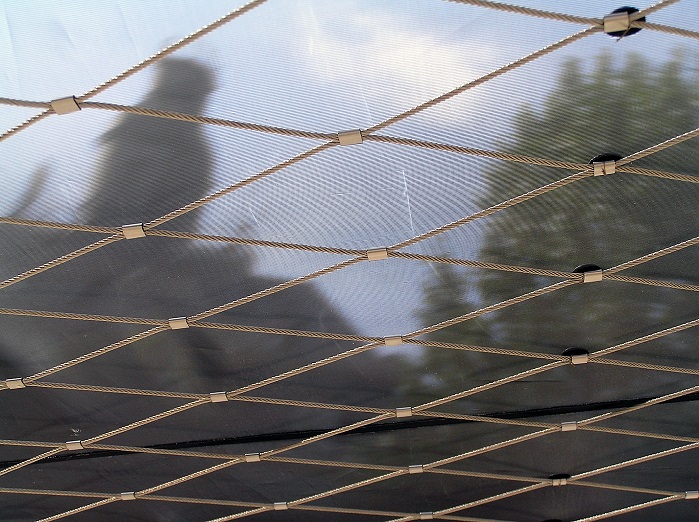
TransProof architectural woven material. © Ettlin Smart Materials/ KIT
How a fabric building envelope can reduce nitrogen oxide pollution (NO and NO2) in densely populated areas is addressed by the developmental approach taken in Aachen. For their green.fACade, the research scientists at ITA have introduced a titanium dioxide coating to the textile layer in the façade. Titanium dioxide acts as a photocatalyst and facilitates the oxidation of the nitrogen oxides to create a soluble nitrate (NO3) that can be washed off. As the external surface is also covered in greenery, it contributes to the conversion of carbon dioxide to oxygen through photosynthesis.
Doctoral candidate and architect (MSc) Jan Serode indicates the potential that façades with textile external skins have. For the interdisciplinary research consortium at RWTH, it is the development of new kinds of textiles that can be installed on the outside of a building like a T-shirt, that is at the centre of attention. At the same time, people are hardly aware of the micro-membrane structures of the textile building envelopes at all from inside, whilst, from outside, the impact of buildings with a textile façade is ‘very sculptural’. This effect changes with the reversal of the lighting situation in the evening.

Business intelligence for the fibre, textiles and apparel industries: technologies, innovations, markets, investments, trade policy, sourcing, strategy...
Find out more